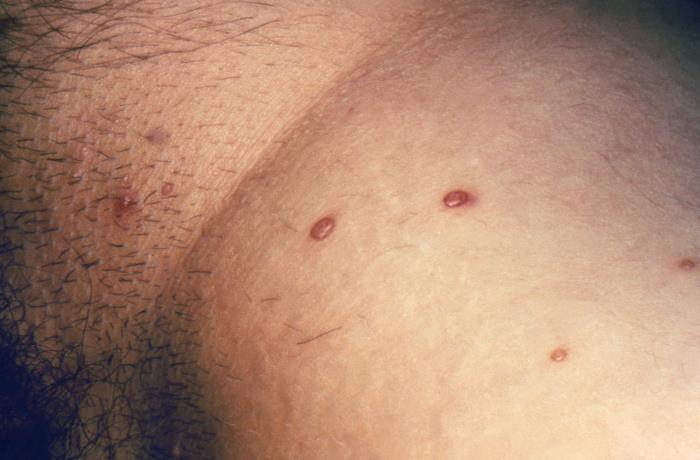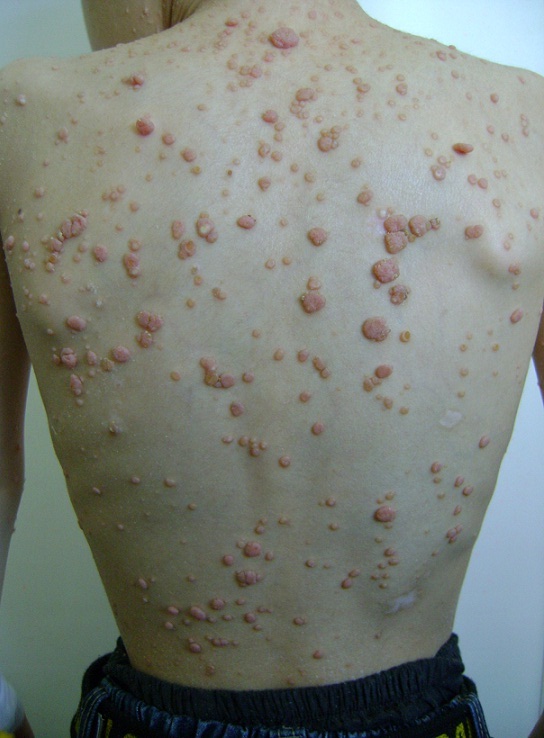Molluscum contagiosum is a viral infection limited to the epidermis, typically without systemic manifestations. This infection is common in children below 5 years of age, though it can also be seen in healthy adolescents and adults, typically related to either contact sports or, with lesions on the genitals, as a sexually transmitted infection (STI). Lesions appear as grouped, flesh-colored, dome-shaped papules with central umbilication. Molluscum contagiosum is mild in immunocompetent patients and self resolves within months. Immunocompromised individuals present with extensive lesions which require treatment. Molluscum contagiosum is highly transmissible; therefore, patient education is key in its management. Cryotherapy with liquid nitrogen is the 1st-line treatment.
Last updated: Oct 31, 2022

Dermatologic manifestation of molluscum contagiosum:
Flesh-colored pearly papules with central umbilication are present in the inguinal region, suggestive of molluscum contagiosum.

Multiple instances of molluscum contagiosum on the back of a child:
Flesh-colored pearly papules with central umbilication
There is no consensus on optimal treatment.
Typical 1st-line therapies recommended by experts include:[1-5]
Other potential treatment options include:[3,5]
Immunocompromised immunocompromised A human or animal whose immunologic mechanism is deficient because of an immunodeficiency disorder or other disease or as the result of the administration of immunosuppressive drugs or radiation. Gastroenteritis patients Patients Individuals participating in the health care system for the purpose of receiving therapeutic, diagnostic, or preventive procedures. Clinician–Patient Relationship:[1,5,9]
In pregnancy Pregnancy The status during which female mammals carry their developing young (embryos or fetuses) in utero before birth, beginning from fertilization to birth. Pregnancy: Diagnosis, Physiology, and Care:[3,5]
References